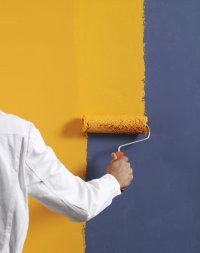Everything You Should Know about Wall Coatings
- admin
- May, 06, 2013
- painters-blog
- Comments Off on Everything You Should Know about Wall Coatings
Every year many home owners encounter several challenges when searching for a painting contractor to provide them with lasting wall protection for their homes. Paints always come with their share of limitations and cannot really address wall problems, such as crumbling mortar joints, damp seeping into the building, discoloration of brickwork, and so on. Wall coating comes handy during these times.
For those who aren’t aware, wall coatings are nothing but decorative treatments meant for everlasting protection of your walls. They provide your walls with an attractive finish. These coatings use expensive ingredients, which makes them extremely hard wearing. The coatings are usually 30 times the thickness of your regular paints and that explains its durable nature. This additional thickness also helps to cover any scars that cannot be otherwise covered using traditional paints.
 Wall coatings are available in different textures. They range from smooth to coarse textures. Before you hire a wall coating company, make sure you test out the various samples. There are many manufacturers who claim their systems to be micro-porous. What it means is though their systems are extremely good in resisting penetration of water, they still allow for water vapour to pass through. This makes the walls breathable.
Wall coatings are available in different textures. They range from smooth to coarse textures. Before you hire a wall coating company, make sure you test out the various samples. There are many manufacturers who claim their systems to be micro-porous. What it means is though their systems are extremely good in resisting penetration of water, they still allow for water vapour to pass through. This makes the walls breathable.
Good preparation is essential when it comes to applying wall coatings. First and foremost, you need to identify the exact problems in your walls, including indications of dampness, dents, and loose pebble dash. The next step is to apply fungal wash that is environment friendly. This can be sprayed on the wall using a sprayer and then washed off with a power wash system.
Following that you need to remove the existing surface. There is no point in applying a lifelong protection system over flaky paint. After that, you should proceed to fix the cracks and then identify and remove the areas of rendering. Among the last steps is to seal the walls and apply the wall coatings.

